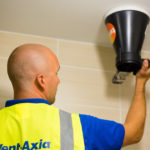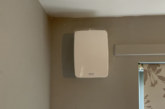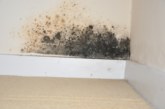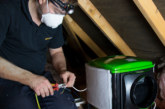Resident comfort is an important consideration with the health benefits of good indoor air quality (IAQ), low noise levels and thermal comfort all widely recognised. The recent publication by the National Institute of Health and Care Excellence (NICE) ’Guidelines for Indoor Air Quality’ adds to the call for councils to ensure residents’ homes have good IAQ. Tom Wodcke reports.
The negative health effects of poor IAQ are clear. Extensive research has linked poor IAQ to cancer, asthma, stroke and heart disease, diabetes, obesity and dementia, so it vital this issue is urgently addressed. NICE has published draft guidelines, ‘Indoor Air Quality at Home’, in which it calls on local authorities to adopt new IAQ strategies, urging them to be aware of the air quality in residents’ homes to reduce exposure to indoor pollutants and so help protect health.
Key to improving poor IAQ in homes is raising awareness and knowledge of the causes and how to combat them. Activities such as cooking, cleaning, showering, drying clothes and burning candles all significantly affect IAQ when effective ventilation is absent. NICE’s guidelines advise the use of mechanical ventilation, in addition to natural background ventilation, to combat build-up of pollutants, damp and condensation. Positive Input Ventilation (PIV) is an ideal choice for mechanical ventilation in social housing. This energy-efficient method of ventilation gently replaces polluted, unhealthy air with filtered drier air creating a healthier indoor environment where condensation and mould find it hard to exist.
Another area landlords need to consider, highlighted in the NICE Guidelines, is the importance of a balanced approach to insulation and ventilation. As homes have become increasingly airtight to improve efficiency it is essential effective ventilation is installed too. This allows homes to breathe and moisture in the air to escape, otherwise condensation will occur. But it’s also important the most suitable form of ventilation for the individual property is installed. For instance, PIV is ideal for combating condensation and mould in problem properties.

Maintenance
Although the NICE Guidelines highlight the need to ensure rented homes have a ventilation system that complies with design and performance requirements, correct installation, testing and maintenance are vital too. Property managers and landlords need to undertake regular maintenance to ensure ventilation effectiveness is maintained. And it’s also crucial to let residents know how their ventilation system works and why it is important not to turn it off.
To help local authorities the NICE document recommends a simple step that landlords can take is to ensure IAQ is checked when a property undergoes other inspections. Plus, any risk factors identified in an inspection could then be used to help other homes at risk. The NICE Guidelines also encourage local authorities to work with housing officers, environmental health, midwives, social workers and care workers to use existing home visits to identify those at risk and to develop a referral process when poor IAQ is identified.
Advising residents about recognising the risks of poor IAQ is vital too. NICE suggests local authorities should give general advice to residents on how to improve ventilation if the source, such as traffic pollution, cannot be controlled, as well as advising them to report inadequate ventilation to their landlord. If action is not taken within an acceptable timeframe, proactive reporting should be in place for private and social tenants to report their landlords to the local authority.
Sound levels
The Chief Medical Officer’s 2017 Annual Report ‘Health Impacts of all Pollution’ stated ‘Noise stands second to poor air quality in terms of the burden of ill health caused by a single pollutant’. Bearing this in mind, it’s important to consider acoustics when specifying ventilation. For instance, traditionally many metal-boxed PIV units have been large, bulky and vibrate noisily, which can affect resident comfort. This can often mean ventilation is turned off, resulting in condensation, mould and poor IAQ.
The latest PIV units have been designed to minimise noise, leaving residents undisturbed. For example, Vent-Axia’s PoziDry Compact Pro now offers ultra-low sound levels thanks to its anti-vibration EPP body, which makes the unit condensation resistant too. It also has a precision engineered forward curved centrifugal impellor assembly, further reducing noise levels to as low as 11dBA, thus improving resident comfort.
Thermal comfort
Good thermal comfort is another important consideration, especially for vulnerable residents whose health can easily be affected by being too hot or too cold. To improve thermal comfort for residents in high and low temperatures, the latest PIV units feature summer and winter comfort settings allowing installers to change a unit’s temperature-triggered boost and cut-off settings, thus ensuring homes remain at a comfortable temperature all year round.
This is particularly useful in homes with young children or the elderly where occupants may want to maintain their indoor temperature to a constant level. This sort of control option means resident comfort is improved as the thresholds can be adjusted to suit individual occupants.
With the PoziDry Compact Pro, the fresh, filtered air enters the room through the discreet grille, which can be set to one of eight positions, ensuring the airflow is always directed upwards, thus reducing cold draughts. Another way of effectively controlling thermal comfort is to specify a PIV unit with an integral heater. With this type of unit, a heater element automatically activates when necessary, tempering the supply air to a chosen temperature, thus helping ensue good thermal comfort in the home.
Local authorities have a duty of care to ensure their residents are living in a healthy environment. Since IAQ, noise and thermal levels all affect health and wellbeing these are core areas to consider.
Tom Wodcke is Product Marketing Manager at Vent-Axia









